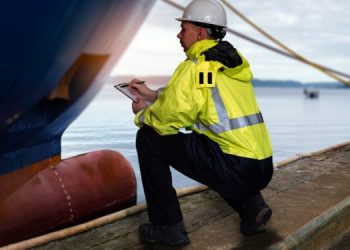Including emissions from Polarcus’ fleet of 3D seismic vessels
 A Cambridge-Dubai CleanTech alliance is seeking to cut CO2 emissions from ships. Cambridge Carbon Capture in the UK and Polarcus, based in the UAE, have entered into the research collaboration.
A Cambridge-Dubai CleanTech alliance is seeking to cut CO2 emissions from ships. Cambridge Carbon Capture in the UK and Polarcus, based in the UAE, have entered into the research collaboration.
The alliance aims to leverage and further develop the Cambridge, UK company’s carbon mineralisation technology. It could potentially be used to reduce CO2 emissions from ships, including emissions from Polarcus’ fleet of 3D seismic vessels.
As part of the agreement Polarcus and CCC have agreed to jointly fund a three-year Ph.D. research programme at the University of Sheffield. The programme will operate in association with the E-Futures Doctoral Training Centre scheme operated at the university.
It is believed that the research project will make an important contribution to Polarcus’ goal of becoming the most environmentally responsible towed marine seismic service provider in the industry.
Dr Robin Francis, CEO of Cambridge Carbon Capture, said: “We are delighted to be working with Polarcus, an acknowledged leader in reducing emissions from marine vessels. The collaboration with help us to further develop our carbon capture technologies for use in the marine and other sectors.”
Polarcus is a pure play marine geophysical company with a pioneering environmental agenda, specializing in high-end towed streamer data acquisition from Pole to Pole.
It operates a fleet of high performance 3D seismic vessels incorporating an innovative design and advanced maritime technologies for improved safety and efficiency. It offers contract seismic surveys and multi-client projects worldwide and employs over 500 professionals.
Cambridge Carbon Capture is developing unique electrochemical mineral carbonation technologies for the profitable & scalable capture of CO2 into high value products while producing clean carbon-free power.
The company works with industrial customers and research partners to develop cost-effective and practicable technical solutions for carbon capture, zero-carbon power production and minerals transformation.
CTO, Michael Priestnall, had the initial idea that the natural carbon-silicate cycle – in which limestone is formed from the reactions of carbon dioxide with volcanic rocks – could be executed very rapidly and efficiently using a fuel cell.
CCC’s process generates clean electricity by converting CO2 and magnesium or calcium containing wastes or minerals into solid carbonate construction materials and by-product metals and minerals.
The value of these products, coupled with the high efficiency, low capital costs and scaleability of CCC’s technology make CO2-mineralisation a far more attractive option than separation, compression and underground storage of CO2.
Target markets include power stations, industrial point sources of CO2 and the materials, mining, minerals and waste process industries. Based at IdeaSpace on the West Cambridge University site, CCC partnered with the University to prove the technical viability of their technology and in 2010 the team was joined by CEO, Dr Robin Francis, former CEO of Voler Energy plc.
Source: Business Weekly



























































